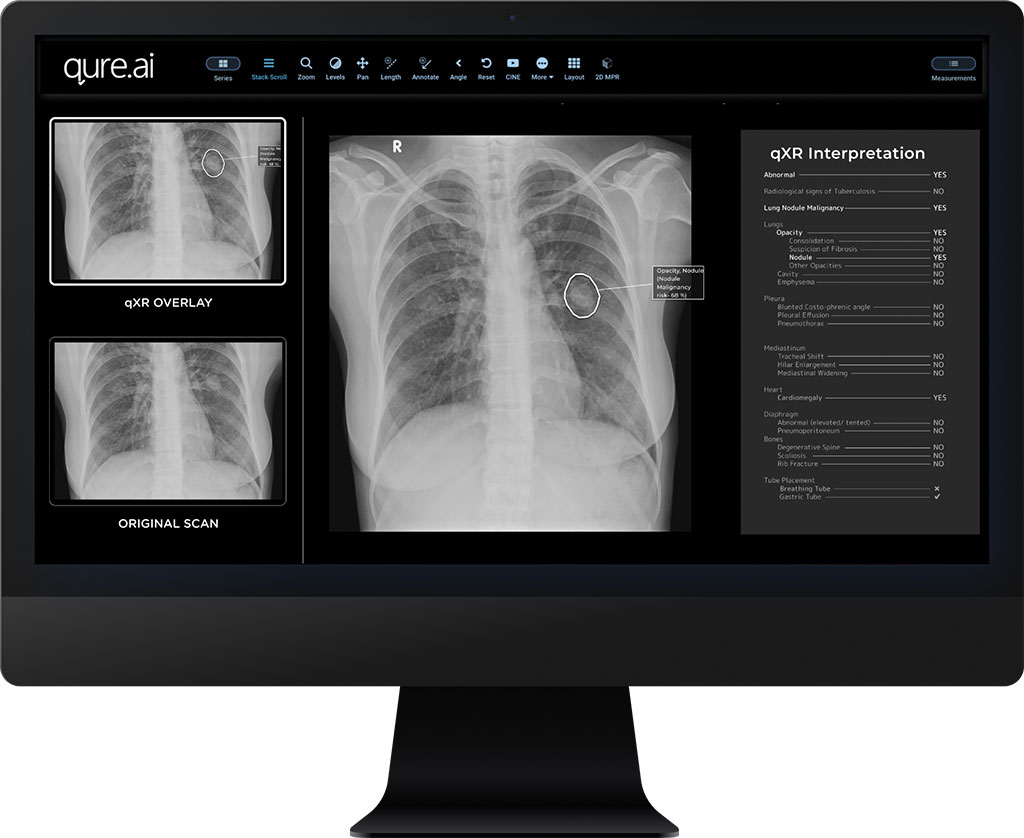Chest X-ray AI Identifies Improper Breathing Tube Placement
By MedImaging International staff writers
Posted on 31 Jan 2022
An artificial intelligence (AI) algorithm improves critical care management by assessing endotracheal and tracheostomy breathing tube (BT) placement.Posted on 31 Jan 2022
The Qure.ai (Mumbai, India) qXR-BT standalone image analysis software is designed to analyze and determine the position of tip of a BT relative to the carina by generating a secondary digital chest X-ray image. It then automates measurements and provides the attending physician with a report on the tube’s positional accuracy in less than one minute. This enables clinicians to identify correct positioning and determine if extra attention is required. The algorithm is vendor-agnostic, and works on both portable and stationary X-ray machines.

Image: AI software identifies correct placement of breathing tubes (Photo courtesy of Qure.ai)
The chest X-rays are sent to qXR-BT by means of transmission functions within the user’s picture archiving and communication system (PACS). Upon completion of processing, qXR-BT returns results to the user’s PACS or other user specified radiology software system or database in a PDF output that contains preview images that show segmented structures, outlined with a textual report describing the structures detected. The text report is restricted to the presence or absence of the breathing tubes and the carina as detected by the software.
In addition, qXR-BT outputs a digital imaging and communications in medicine (DICOM) report, which consists of a single complete additional DICOM series for each input scan containing labeled overlays that indicate the location and extent of the segmentable structures, suitable for viewing in the PACS or radiology viewer. qXR-BT uses pre-trained convolutional neural networks (CNNs) to process the images.
“qXR-BT is expected to become a standard feature of any critical care framework, giving residents and junior clinicians more confidence in reliably measuring breathing tube placement in intubated patients,” said Prashant Warier, CEO and Founder of Qure.ai. “Especially in the wake of the COVID-19 pandemic and the need for mechanical ventilation in affected patients, the need for prompt assistance to an overburdened healthcare workforce is paramount.”
Studies have shown that up to 25% of patients intubated outside of the operating room (OR) have misplaced endotracheal tubes, which can lead to severe complications such as hyperinflation, pneumothorax, cardiac arrest, and death. Moreover, up to 45% of ICU patients, including 5-15% of COVID-19 patients, require intensive care surveillance and intubation for ventilatory support.
Related Links:
Qure.ai














